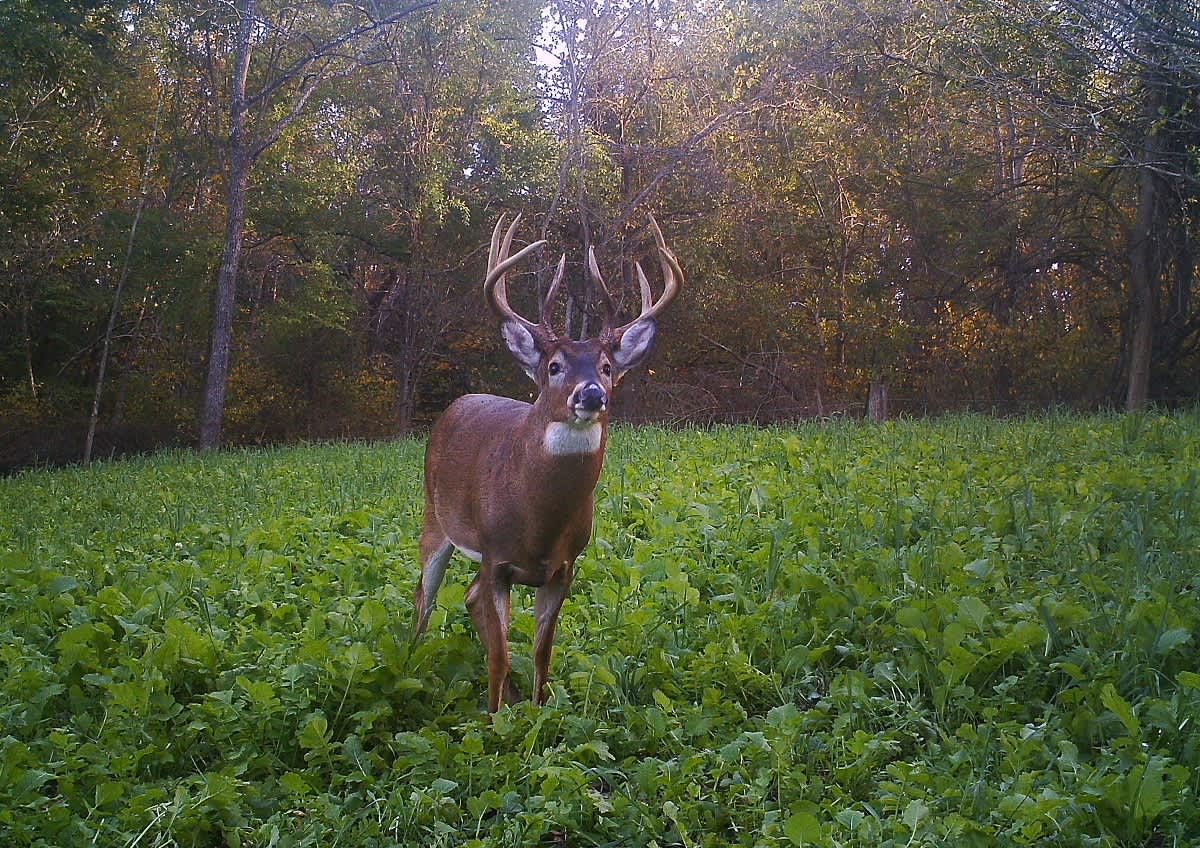Food Plot Strategies for Summer Growth and Retention
Bernie Barringer 05.07.14

When most hunters think of planning food plots, the number-one thing on their mind is to bring a buck to the plot during the hunting season. What many people do not realize is that bringing that buck in front of your sights during the season starts in the spring and summer.
One of the keys to having deer on your property during the hunting season is having them acclimated to and comfortable on the property all year long. The right summer food plot will not only hold the bucks on your land, but it will increase the number of does and fawns on your land, too, which will pay off during the rut when the bucks from other properties are ranging widely.

The does are looking for a place to drop their fawns in May and the place they choose will be secure, free from human intrusion, and have abundant food and water. Adult does need lots of high-quality food and plenty to drink when they are nursing fawns. Your food plot can provide them with the food source. When the does and fawns are imprinted on the property, they will remain there as long as the food is available, and they will be there to attract the bucks when the time comes.
It’s no secret that deer love brassicas. Turnips and radishes are deer magnets and many food plot blends have these brassicas in the mix. However, planting them too early and leaving them until fall can be a mistake. Many a food plot with brassicas has been a deer magnet during summer, but hunters are left wondering why the deer have left by October. Tom Lester of Monster Raxx seed company claims the reason is simple. He says the turnips and radishes become woody and less palatable as they mature.
If you plant them in the spring, the deer will use them little during the early fall when you really want the deer in your plots. Later, after a couple hard frosts, the sugars in them make them more attractive once again, and the roots and tubers themselves are a source of attraction late in the winter.
The answer to the problem, according to Lester, is to plant clovers or a clover mix in the spring, and then wait until late July to early August to plant the brassica mix. The clovers keep the deer on the property during the summer, and then the turnips, rape, and radishes are working their magical attraction on the deer right when you want to be in the treestand on opening day of bow season.
Clovers can be planted early. In fact, some people “frost seed” them, meaning they plant the seeds on top of the ground right as the snow is melting in the spring. The seed is broadcast onto the frozen ground, and spring rains bring it to life.
Clovers and alfalfa that are seeded early may need to be mowed by mid-summer to keep the weeds down and keep the plants from going to seed and dying. A better option for many people is to plant the clovers in May, then disc them up the first of August and put in the brassica mix at that time. This way the brassicas are at their peak of palatability right during the early hunting season, and they have time to fully mature before a hard frost. The tubers will be ripe and the deer will greedily dig them up and consume them during the cold periods.

Planting clovers is relatively easy and a minimum of equipment is needed. The seeds can be broadcast on tilled ground and either rolled in or smoothed over with a drag and then rolled. I rent a large tiller and till my food plot, then broadcast the seed with a pull-behind spreader attached to my four-wheeler. One pass with a drag (an old metal bedspring) and one pass with a roller (both pulled behind the four-wheeler), and I have very good success rates for germination of clovers and brassicas.
This year as you are planting your food plots, try not to just think about the importance of having quality food during the fall hunting season to attract deer, but also consider the importance of having deer on the property during the summer, too—and not just the bucks. You want your food plot to become a hub of activity for all the deer in the area so they are comfortable there and are rewarded with good food each time they come. They will keep on coming right up until you are ready to turn them into your winter’s supply of venison.
Follow Bernie’s bowhunting adventures on his blog, bowhuntingroad.com.

